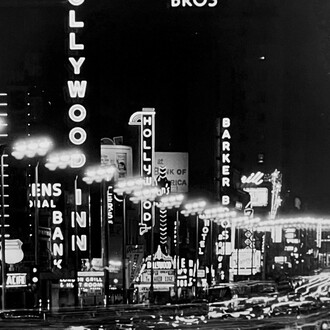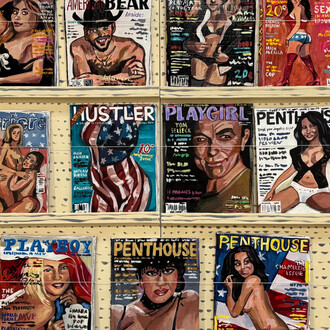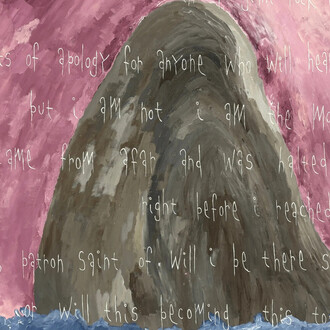In Javier Peláez's recent work executed in Mexico City for this year's exhibition project with William Turner Gallery there are new formal and discursive premises in the composition of the images and also lines of continuity with respect to his past explorations. Specifically, the artist continues to develop the optical complexity of abstract planimetric architectures; retains the connection with certain Japanese visual elements; supports the idea of the diagram or structure of floating or weightless forms; and continues to resort to the industrial or high-tech chromatic scenes that incorporate fluorescence into sober color repertoires.
As for the new premises visible, the first thing that is noticed is an emphasis on the tension between the secant geometrical planes and the image of the trunk of the tree. The atmosphere in most of these new paintings is that of a world where the organic is placed in an artificial and strident scenery (somewhat influenced by “vapor wave” aesthetics) where architectonic planes strive to configure themselves against broken tree trunks while the rupture of the trunk emphasizes on the concept of fragility and change as inevitable components of our human condition.
Conceptually Peláez himself associates the icon of the tree with a process of reference to his personal history. The tree is related to fatherhood, specifically to the figure of his late father, who used to be an architect.
The Garden of Eden has been subverted: the tree of life and enlightenment, according to the ancestral sacred mythologies, appears dry and broken in the visions of Javier Peláez, in a state of fragmentation and sterility. The dystopian tone of the iconography invoked by the artist speaks, in a sense, of the crisis of the idea of happiness and raises a saga of the mediatization of reality.
Emerging from a history of innovative West Coast artists, who pioneered the Finish Fetish and Light and Space movements, Brindle has mastered the industrial materials at his disposal - airbrush, auto paints, resin, wood. Borrowing tools and techniques from the industrial complex of California car culture, Brindle applies paint to the surface of his paintings in multiple layers of fine airbrush sprays.
Traditionally Brindles encases atmospheric gradations of color in hardened surfaces creating a constant push and pull between depth, light and texture. Brindles works on paper achieve a similar effect but with a quieter and more thoughtful tone. Capturing the effect of light purely with color is where Brindle excels as a painter. Immersing the viewer into luminous, chromatic fields, these paintings transcend the representational suggestion of land and sea, evoking something more elemental, like vast & infinite horizons rushing across time and space.
Casper Brindle grew up surfing the beaches along LA's coast during the 1970's and 80's, and worked for Light and Space artist, Eric Orr, in the late 1980’s. His work is in the permanent collection of the Frederick R. Weisman Art Foundation in Malibu, CA and has been exhibited at the Museum of Art and History in Lancaster, CA the Laguna Art Museum in Laguna Beach, CA. The artist currently lives and works in Los Angeles.
















